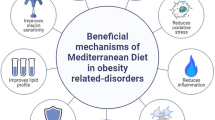Abstract
Food intake and weight gain are influenced by endocannabinoids whose actions are regulated by the fatty acid amide hydrolase (FAAH) enzyme. The homozygous Thr/Thr genotype of the functional Pro129Thr variant (rs324420) in the gene encoding FAAH was recently reported to associate with overweight and obesity in white and black populations. We investigated the Pro129Thr variant in relation to overweight and obesity in a relatively large population-based study sample of Danish whites (n = 5,801). In case-control studies of obesity, a borderline association with the major Pro allele was identified; however, after correction for multiple testing, no association was found. Furthermore, a possible association between the major Pro allele and obesity was not supported by studies of obesity-related quantitative traits. In conclusion, in a large study sample, we were unable to find robust evidence of an association of the Pro129Thr FAAH variant with overweight, obesity, and any related quantitative traits among the examined whites.

Similar content being viewed by others
Abbreviations
- FAAH:
-
fatty acid amide hydrolase
- CB1:
-
cannabinoid type 1 receptors
- BMI:
-
body mass index
- MAF:
-
minor allele frequency
- HOMA-IR:
-
homeostasis model assessment of insulin resistance index
- SD:
-
standard deviation
- CI:
-
confidence interval
- SNP:
-
single nucleotide polymorphism
References
Maes HH, Neale MC, Eaves LJ (1997) Genetic and environmental factors in relative body weight and human adiposity. Behav Genet 27:325–351
Mokdad AH, Ford ES, Bowman BA, Dietz WH, Vinicor F, Bales VS, Marks JS (2003) Prevalence of obesity, diabetes, and obesity-related health risk factors, 2001. JAMA 289:76–79
Cravatt BF, Demarest K, Patricelli MP, Bracey MH, Giang DK, Martin BR, Lichtman AH (2001) Supersensitivity to anandamide and enhanced endogenous cannabinoid signaling in mice lacking fatty acid amide hydrolase. Proc Natl Acad Sci USA 98:9371–9376
Jamshidi N, Taylor DA (2001) Anandamide administration into the ventromedial hypothalamus stimulates appetite in rats. Br J Pharmacol 134:1151–1154
Williams CM, Kirkham TC (1999) Anandamide induces overeating: mediation by central cannabinoid (CB1) receptors. Psychopharmacology (Berl) 143:315–317
Cota D, Marsicano G, Lutz B, Vicennati V, Stalla GK, Pasquali R, Pagotto U (2003) Endogenous cannabinoid system as a modulator of food intake. Int J Obes Relat Metab Disord 27:289–301
Matsuda LA, Lolait SJ, Brownstein MJ, Young AC, Bonner TI (1990) Structure of a cannabinoid receptor and functional expression of the cloned cDNA. Nature 346:561–564
Pertwee RG (2001) Cannabinoids and the gastrointestinal tract. Gut 48:859–867
Cota D, Marsicano G, Tschop M, Grubler Y, Flachskamm C, Schubert M, Auer D, Yassouridis A, Thone-Reineke C, Ortmann S, Tomassoni F, Cervino C, Nisoli E, Linthorst AC, Pasquali R, Lutz B, Stalla GK, Pagotto U (2003) The endogenous cannabinoid system affects energy balance via central orexigenic drive and peripheral lipogenesis. J Clin Invest 112:423–431
Engeli S, Bohnke J, Feldpausch M, Gorzelniak K, Janke J, Batkai S, Pacher P, Harvey-White J, Luft FC, Sharma AM, Jordan J (2005) Activation of the peripheral endocannabinoid system in human obesity. Diabetes 54:2838–2843
Osei-Hyiaman D, DePetrillo M, Pacher P, Liu J, Radaeva S, Batkai S, Harvey-White J, Mackie K, Offertaler L, Wang L, Kunos G (2005) Endocannabinoid activation at hepatic CB1 receptors stimulates fatty acid synthesis and contributes to diet-induced obesity. J Clin Invest 115:1298–1305
Pagotto U, Marsicano G, Cota D, Lutz B, Pasquali R (2006) The emerging role of the endocannabinoid system in endocrine regulation and energy balance. Endocr Rev 27:73–100
Di Marzo V, Fontana A, Cadas H, Schinelli S, Cimino G, Schwartz JC, Piomelli D (1994) Formation and inactivation of endogenous cannabinoid anandamide in central neurons. Nature 372:686–691
Cravatt BF, Giang DK, Mayfield SP, Boger DL, Lerner RA, Gilula NB (1996) Molecular characterization of an enzyme that degrades neuromodulatory fatty-acid amides. Nature 384:83–87
Chiang KP, Gerber AL, Sipe JC, Cravatt BF (2004) Reduced cellular expression and activity of the P129T mutant of human fatty acid amide hydrolase: evidence for a link between defects in the endocannabinoid system and problem drug use. Hum Mol Genet 13:2113–2119
Sipe JC, Waalen J, Gerber A, Beutler E (2005) Overweight and obesity associated with a missense polymorphism in fatty acid amide hydrolase (FAAH). Int J Obes 29:755–759
Jørgensen T, Borch-Johnsen K, Thomsen TF, Ibsen H, Glumer C, Pisinger C (2003) A randomized non-pharmacological intervention study for prevention of ischaemic heart disease: baseline results Inter99. Eur J Cardiovasc Prev Rehabil 10:377–386
Ek J, Rose CS, Jensen DP, Glümer C, Borch-Johnsen K, Jørgensen T, Pedersen O, Hansen T (2005) The functional Thr130Ile and Val255Met polymorphisms of the hepatocyte nuclear factor-4α (HNF4A): gene associations with type 2 diabetes or altered β-cell function among Danes. J Clin Endocrinol Metab 90:3054–3059
Acknowledgement
The study was supported by the Danish Medical Research Council, the Danish Diabetes Association, the Velux Foundation, and the European Economic Community (HEPADIP, LSHM-CT-2005-018734). The authors thank A. Forman, L. Aabo, L. Wantzin, and M. Stendal for technical assistance, and G. Lademann for secretarial support.
Author information
Authors and Affiliations
Corresponding author
Rights and permissions
About this article
Cite this article
Jensen, D.P., Andreasen, C.H., Andersen, M.K. et al. The functional Pro129Thr variant of the FAAH gene is not associated with various fat accumulation phenotypes in a population-based cohort of 5,801 whites. J Mol Med 85, 445–449 (2007). https://doi.org/10.1007/s00109-006-0139-0
Received:
Revised:
Accepted:
Published:
Issue Date:
DOI: https://doi.org/10.1007/s00109-006-0139-0




